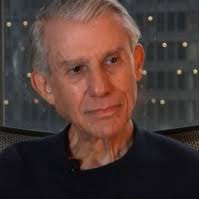This piece was reprinted by OpEd News with permission or license. It may not be reproduced in any form without permission or license from the source.
Mohammed was later secretly taken to a "specially designated (Polish) prison for high-value detainees." Up to a dozen others like him were there, but no first-hand accounts emerged of what happened. However, "well-informed sources" said it was far more high-tech than in Afghanistan - including hydraulic doors, video surveillance and more.From what's known from others who were there, Mohammed was kept in a prolonged state of sensory deprivation, perhaps as long as four months. He was also waterboarded multiple times. There was no exposure to natural light, and the only human contact was with silent masked guards. The ICRC report seemed to confirm that he was kept shackled and naked, except for a pair of goggles and earmuffs. Meals came sporadically to keep prisoners disoriented. It was largely tasteless and barely enough to sustain him.
Under this type treatment, virtually everyone breaks down, and Mohammed was no exception. He ended up confessing to so many crimes, he was barely credible. In addition to the Pearl murder, he said he planned to assassinate Presidents Clinton and Carter, Pope John Paul II and a great deal more, including plots to blow up New York suspension bridges and the Panama Canal - anything to end the pain. Later on, like many other detainees, he said he lied "to please his captors."
Mayer recounts Mohammed's ordeal as well as Abu Zubaydah's and others in her book. She also notes that Dick Cheney "saw to it that some of the sharpest and best-trained lawyers in the country, working in secret in the White House and US Department of Justice, came up with legal justifications for a vast expansion of the government's power in waging war on terror. As part of the process, for the first time in history, the United States sanctioned government officials to physically and psychologically torment US-held captives, making torture the official law of the land in all but name." This "extralegal counterterrorism program presented the most dramatic, sustained, and radical challenge to the rule of law in American history."
The Bush White House adopted a "doctrine of presidential prerogative." It functions in secret and allows no challenge to its authority. In the "war on terror," everything is permissible even against innocent victims. And Mayer found there are many. She revealed a classified 2002 CIA report stating that one-third of Guantanamo's 600 prisoners (at the time) have no connection to terrorism. In fact, the number was far higher as most sent there were snatched randomly for bounty and victimized by being in the wrong place at the wrong time. Major General Michael Dunlavey agreed and suggested up to half of Guantanamo detainees were innocent of any crime. A Seton Hall University Law School study put the number even higher.
CIA, however, later lowered their estimate to 50 unjustifiably detained. But either way it contradicted the administration's claim that Guantanamo held "the worst of the worst" even though most never were charged with a crime and none so far have been tried. They continue being held at black holes sites, totally outside the law, and for most without any hope again for a normal life. After what they've endured, that's impossible. It's America's darkest hour, and Mayer powerfully recounts it.
Late News on Torture Victims
Salim Hamdan was captured during the Afghanistan invasion, held at Guantanamo, and accused of being Osama bin Laden's personal driver. After US District Court judge James Robertson's July 17 ruling (that may be appealed in light of the Boumediene decision), he'll be the first detainee tried by a military commission (possibly beginning July 21) in which he'll receive no due process and no hope for judicial fairness. On July 15, he testified at a pretrial hearing and described everyday life at Guantanamo - a six year ordeal of interrogation, torture, isolation, sexual humiliation and more. A snapshot follows:
-- his "confessions" were made under extreme duress - torture; his lawyer is trying to exclude them from trial; there's practically no chance he'll succeed;
-- "Camp Echo," where was held, "is like a graveyard where you place a dead person in a tomb;"
-- according to prosecutors, he was disciplined 84 times; his counsel said 15 were for trying to speak to other detainees - "through walls, through vents and in the recreation yard;"
-- he described an interrogation by a woman who touched his thigh and groin area; "She behaved in an improper way; She came very close with her whole body towards me. I couldn't do anything;"
-- he described months in isolation, multiple episodes of sleep deprivation, including Operation Sandman for 50 days in 2003, and being force-fed - by military personnel in white coats; they strapped him down and snaked a tube through his nose to his stomach; "Doctors, butchers, I couldn't tell the difference;" it's a very painful procedure;
-- during one month of FBI interrogation, guards rapped on his cell door every five to ten minutes all night to wake him;
-- a tape of his first interrogation was revealed; he said he was a Muslim charity worker, not a bin Laden employee; nonetheless he underwent harsh battlefield questioning with his arms and legs bound, a soldier's boot on his shoulder to keep his head bowed, and a "bag over my head;"
Next Page 1 | 2 | 3 | 4 | 5 | 6 | 7 | 8
(Note: You can view every article as one long page if you sign up as an Advocate Member, or higher).





